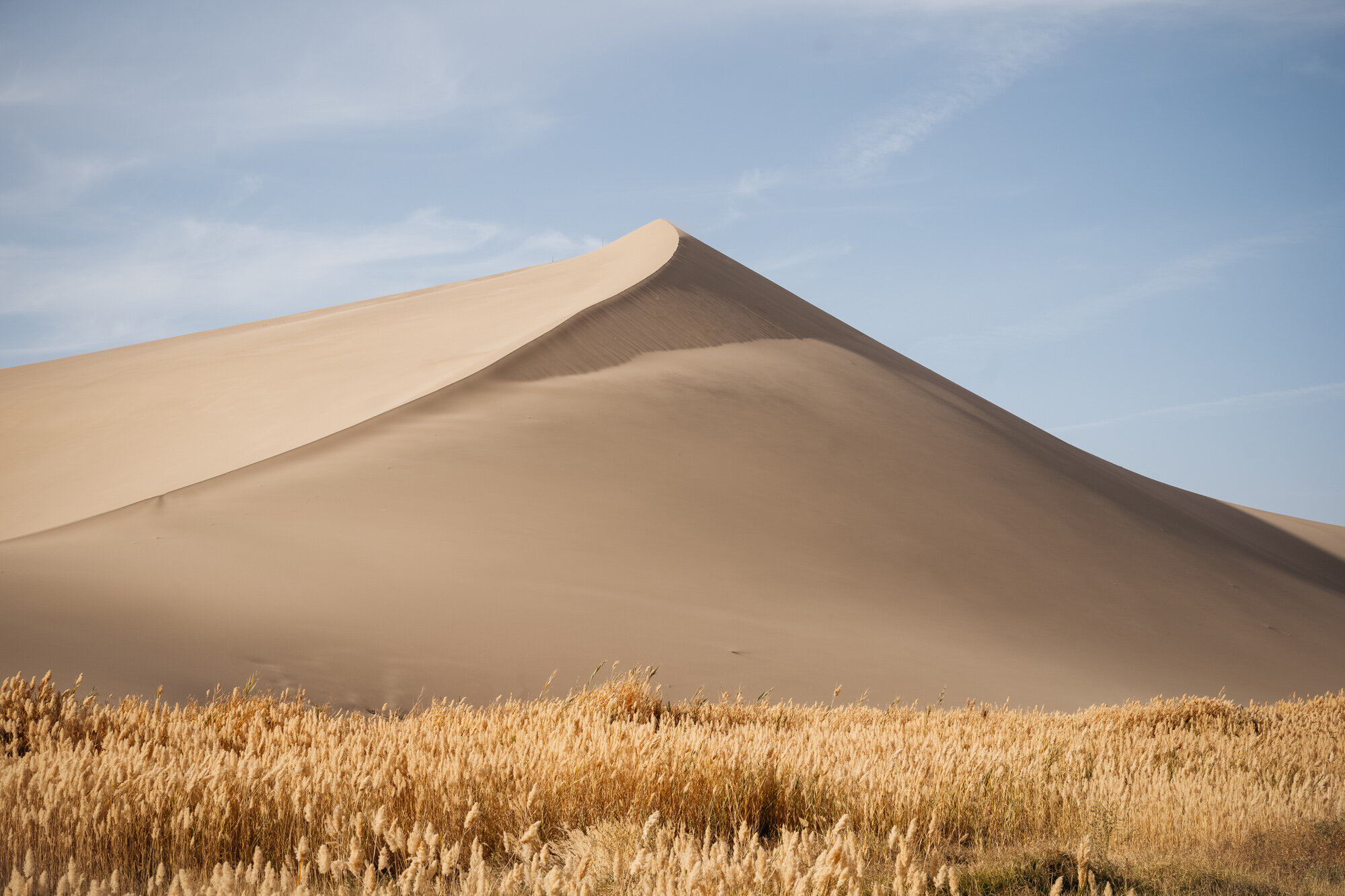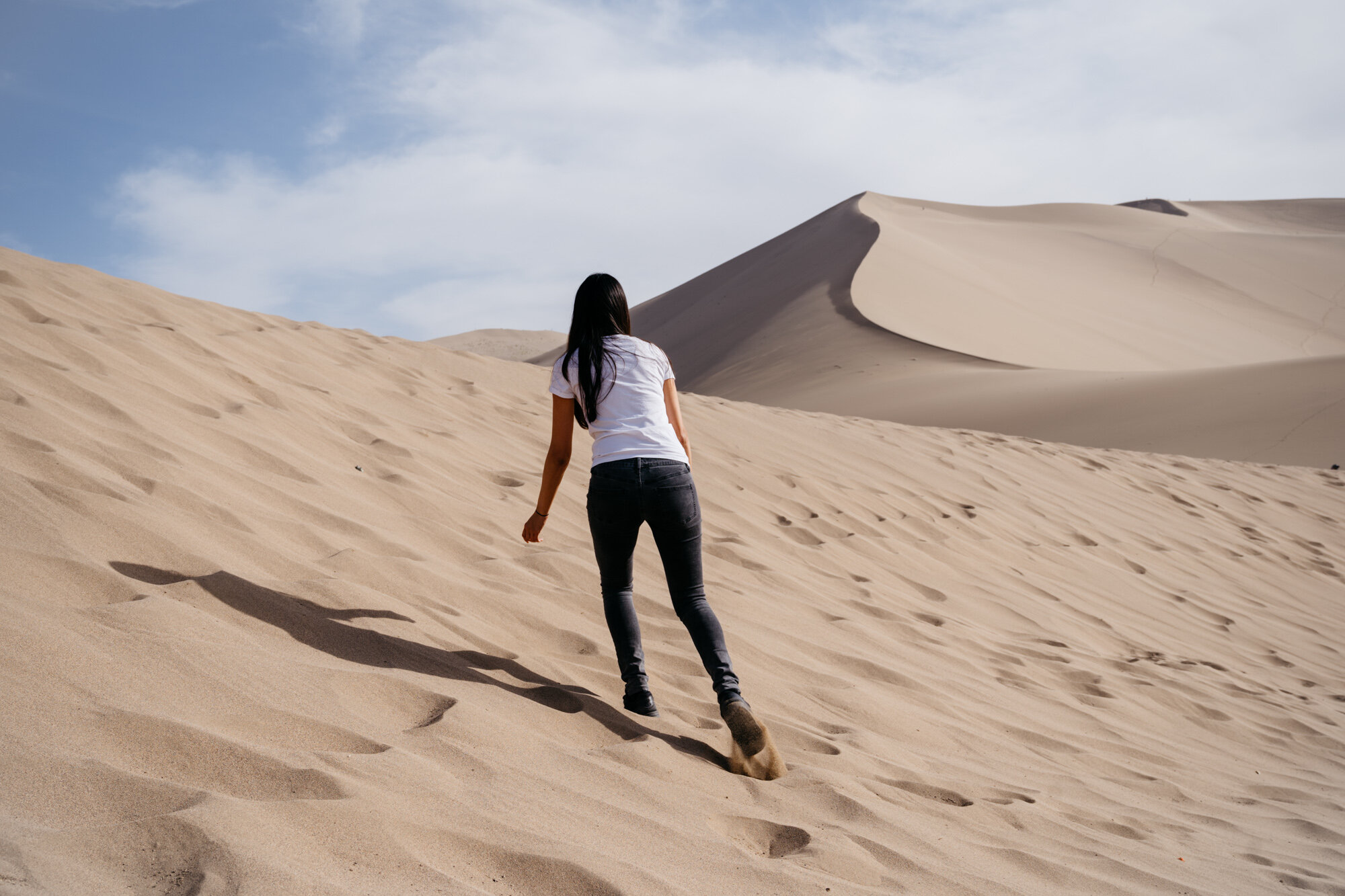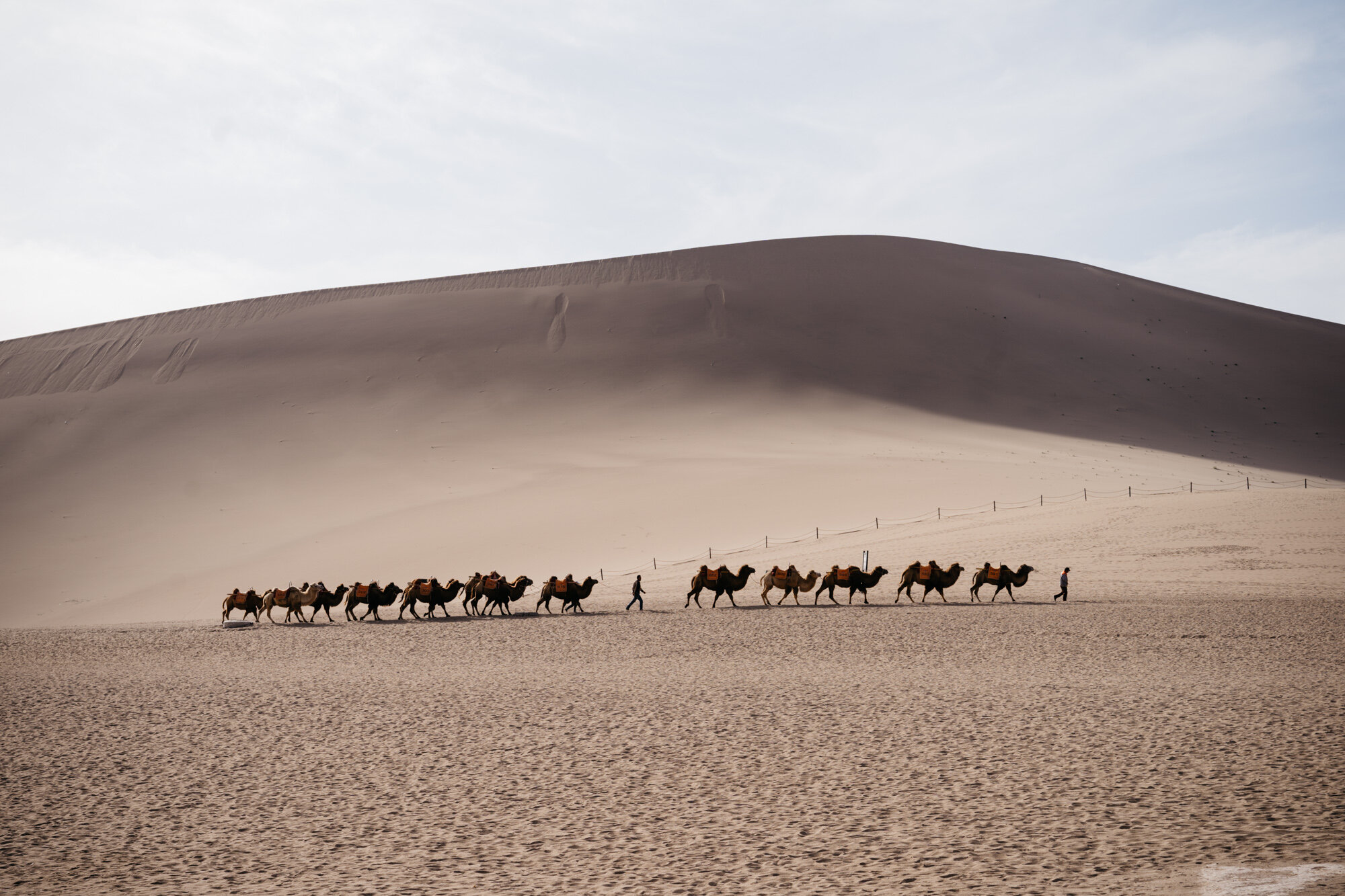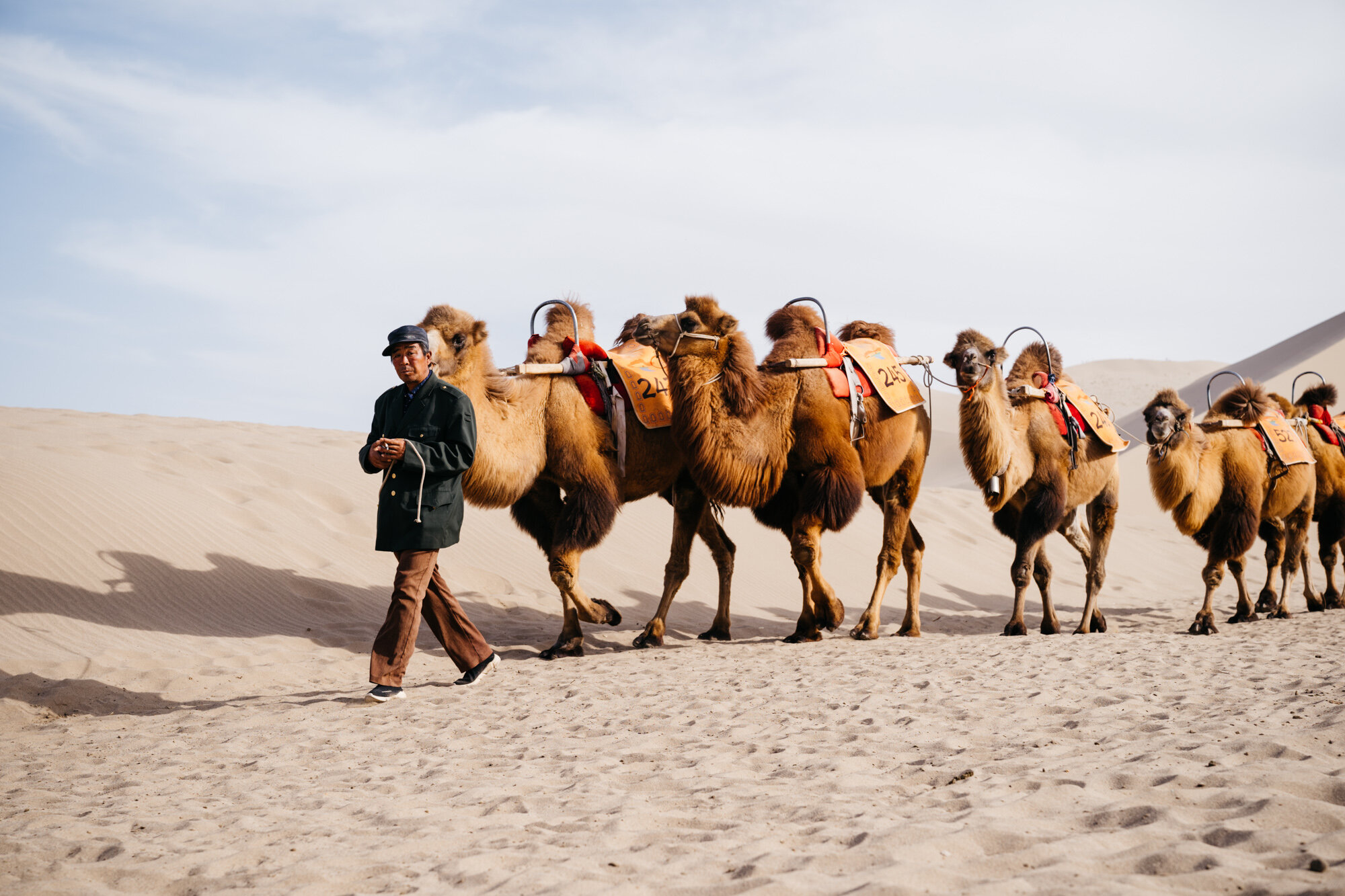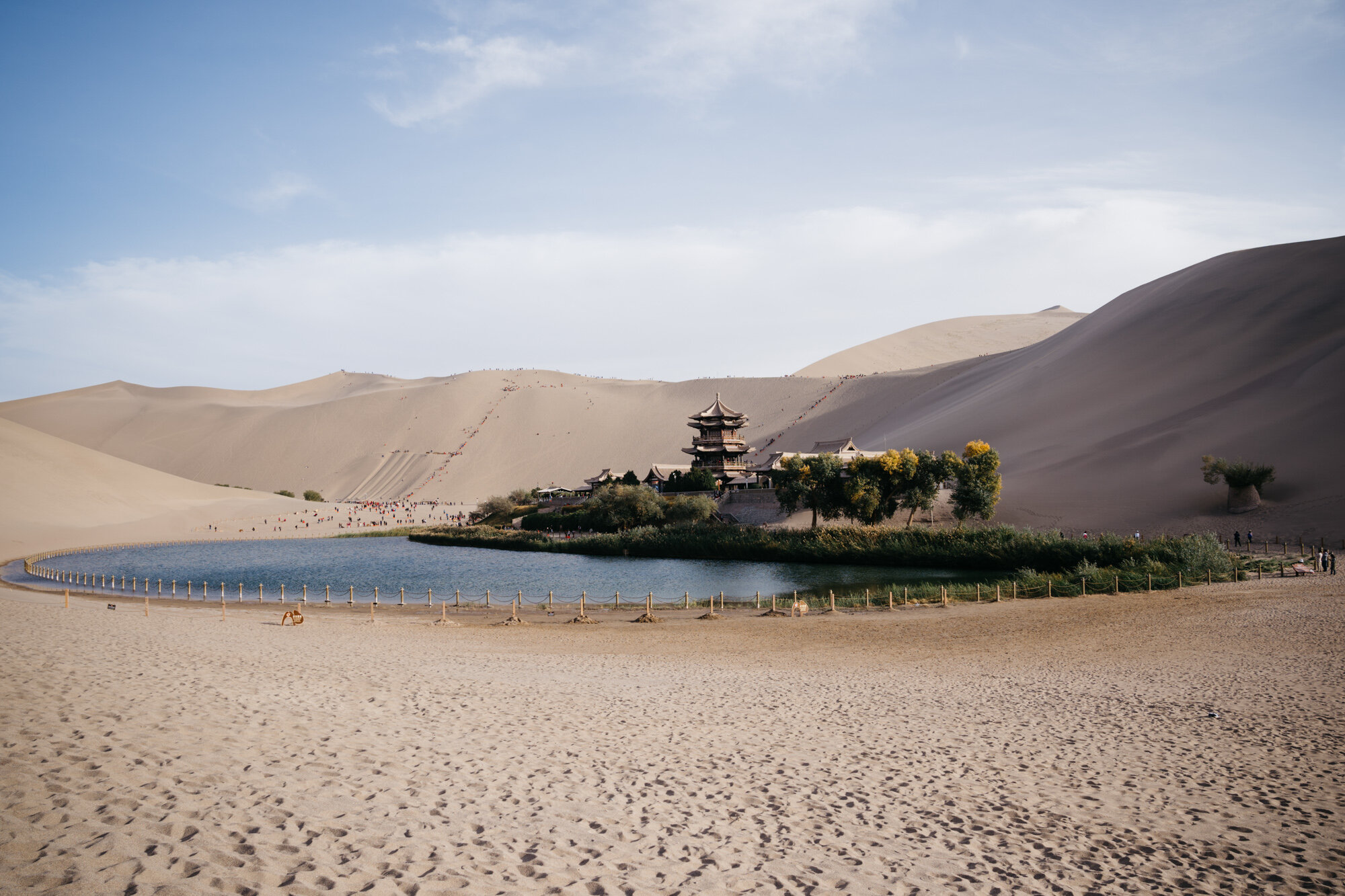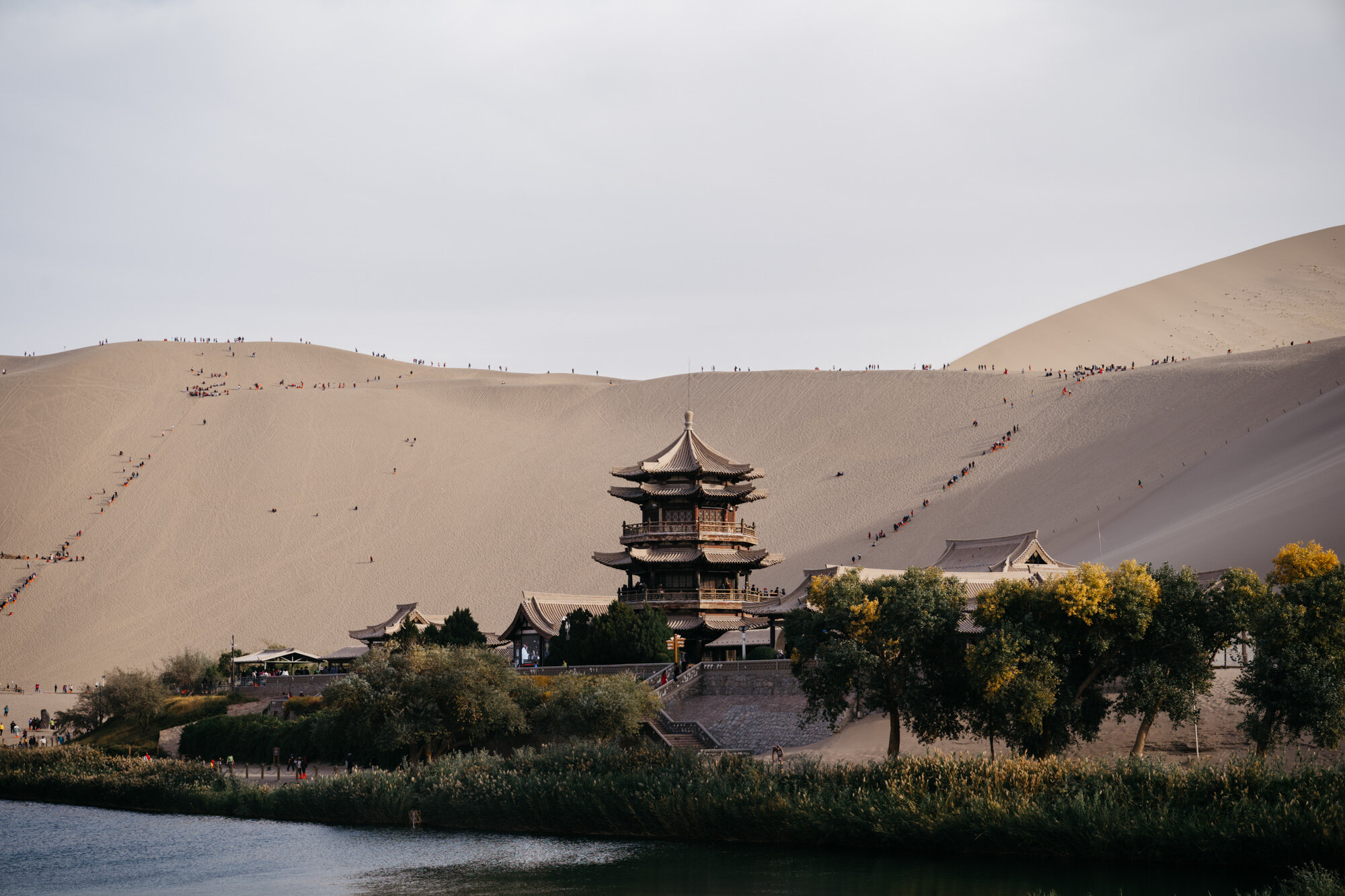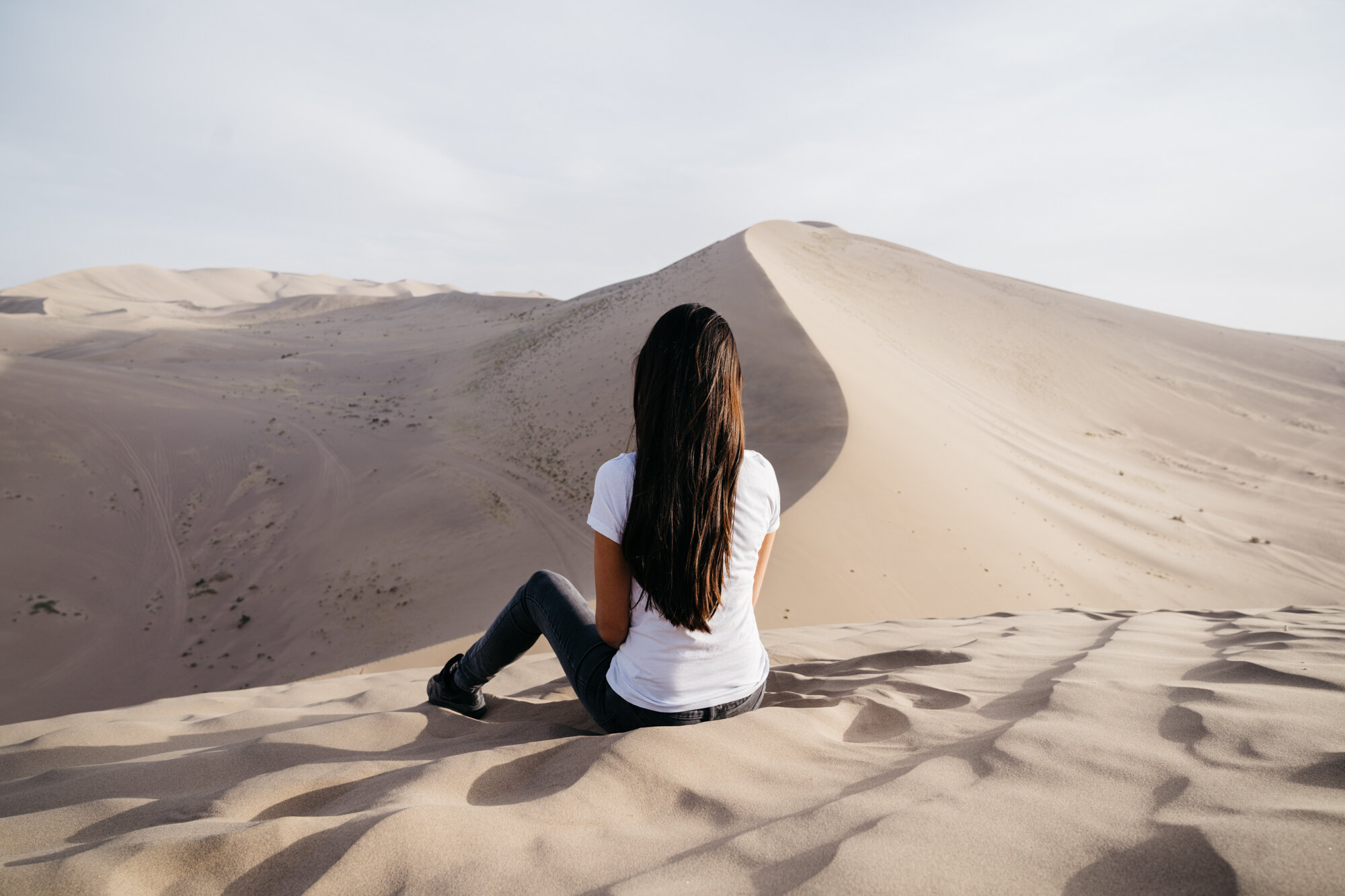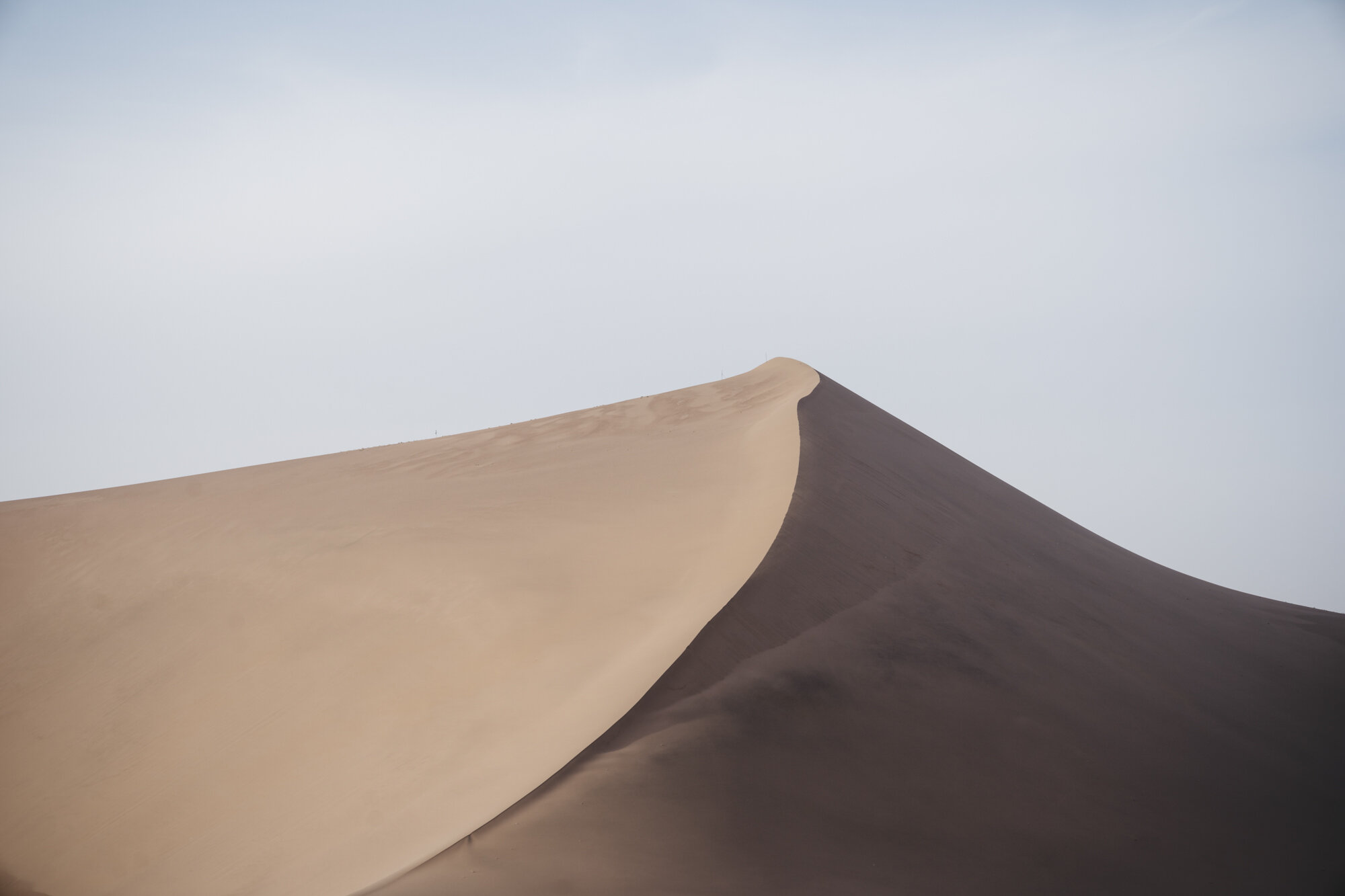The Gobi Desert at Dunhuang
On the edge of the Gobi desert in Central China is the town of Dunhuang. The name Dunhuang means "Blazing Beacon" and refers to the beacons lit to warn of attacks by marauding nomadic tribes during ancient times.
During the Sui (581-618) and Tang (618-907) dynasties, it was the main stop of communication between China and the rest of the world and a major hub of commerce along the Silk Road.
Dunhuang is most famous for its Mogao Caves or "Caves of a Thousand Buddhas”. Buddhist monks had begun to arrive in China from the West around the first century AD and a sizeable community settled in Dunhuang. In the nearby hills, the monks carved out 735 caves originally for worship and meditation. Over time they became a pilgrimage site. Many are covered with exquisite murals and Buddhist statues. A number of Christian, Jewish, and Manichaean artifacts have also been found in the caves, testimony to the wide variety of people who made their way along the Silk Road. They are quite a sight to behold. Unfortunately, I wasn't allowed to take photographs but you can see some here. (Historical information above from Wikipedia).
The Gobi desert is known for its enormous sand dunes which rise like mountains. Thousand of years ago caravans of Bactrian camel would have travelled over these carrying goods intended for sale in distant markets to the west. Those days are long gone but the camels have found new employment. Today, they carry tourists on desert tours.
Dunhuang is also home to a crescent-shaped lake oasis called Yueyaquan. In such a dry and hot place, it is easy to see why Dunhuang was for so many years an essential stop for Silk Road traders and their caravans of camel.
